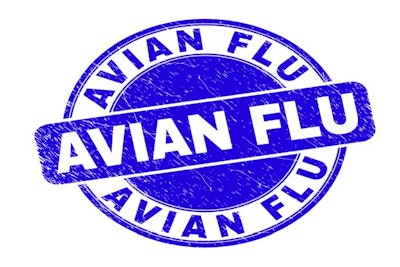
Over the past month, outbreaks of highly pathogenic avian influenza (HPAI) in both wild birds and commercial poultry have occurred in the Republic of Senegal.
In early March, the H5N1 HPAI virus serotype was detected in wild species following mass mortalities of birds in two different regions. This is according to official notifications to the World Organisation for Animal Health (WOAH).
For the Dakar region in the far west of this West African state, this was the first ever detection of this virus variant. Initial losses were of more than 300 gulls and terns at near the Lac Rose body of water. Subsequent reports put the losses at 536 wild birds.
Within a few days, around 640 gulls of various species tested positive for the same virus at the “Langue de Barbarie” national park in Saint-Louis. In this northern region, which borders Mauritania, this virus was detected during an HPAI outbreak wave that ended in February of 2022. According to the latest update to WOAH, more than 1,000 infected birds have died.
At both of these locations, the source of the virus is attributed to wild birds.
In mid-March, the first cases of HPAI were reported in poultry.
According to the WOAH notification, around 500 of the 11,400-bird mixed flock died at a farm in mid-March. Located in the Louga region, the premises is less than 40km from the Saint-Louis national park where the wild bird cases were discovered a few days previously. The remaining 10,900 chicks, broilers and pullets at the farm have been destroyed.
Gambia records first cases of H5N1
Last week, the veterinary authority of The Gambia registered with WOAH the country’s first ever cases of the H5N1 HPAI virus in birds.
Also located in West Africa, The Gambia is bordered to the north, east and south by Senegal, and to the west by the Atlantic Ocean.
As in its neighbor, the Gambian outbreak involved mass mortalities of sea birds, including 385 terns and 44 gulls. This occurred at the end of March in Kombo Central, which is one of the three most westerly districts of the country.
Further outbreaks in Nigerian poultry
Latest notification to WOAH from the Nigerian animal health agency includes 16 confirmed outbreaks. Also linked to the H5N1 HPAI virus serotype, all started between January 8 and March 17 this year.
Individual affected flocks ranged in size from 230 up to 40,000 birds of unspecified type — more than 71,000 in total.
Of these latest outbreaks, 10 were in the northern state of Kano, and four in the adjacent states of Katsina, Bauchi, and Plateau. Also affected were farms in Imo and Ekiti in the south of Nigeria.
Since this virus first hit the country in December of 2020, 332 outbreaks in poultry have been confirmed with WOAH. These have directly impacted almost 2.4 million poultry though mortality or culling.
HPAI situation South Africa
The current HPAI outbreak wave in poultry caused by the H5N1 virus variant began two years ago, in March of 2021.
Since then, the South African veterinary authority has registered 94 outbreaks with WOAH. Directly affected have been almost five million poultry and commercial ostriches. The most recent outbreak to be reported was at a farm in the city of Johannesburg in early January of this year.
In wild birds, the first detections of the H5N1 virus variant in South African wild birds were reported to WOAH in May of the same year. So far, the outbreak total in wild species and backyard poultry has reached 74. Around 21,800 birds are reported to have died, including well over 20,000 Cape cormorants, and almost 300 jackass penguins. Also affected have been almost 2,200 poultry from non-commercial flocks.
As well as these outbreaks linked to the H5N1 virus variant, the H5N2 serotype has also been detected at two locations in South Africa.
However, the South African authority has recently declared to WOAH that the disease situation related to the H5N2 variant has been “resolved.”
In October and November of 2022, poultry at two farms in the same district of KwaZulu-Natal tested positive, but no further cases have been reported.
Outbreaks in 4 African countries this "season"
Since October of last year, HPAI outbreaks linked to the H5N1 virus have occurred in four African countries, according to the latest update from the United Nations’ Food and Agriculture Organization (FAO; dated March 9).
With a total of 23 “events” across the continent, 10 have been recorded in Nigeria, nine in South Africa, and two in each of Réunion and Niger. FAO has also registered the two South African outbreaks involving the H5N2 virus variant.
View our continuing coverage of the global avian influenza situation.

















